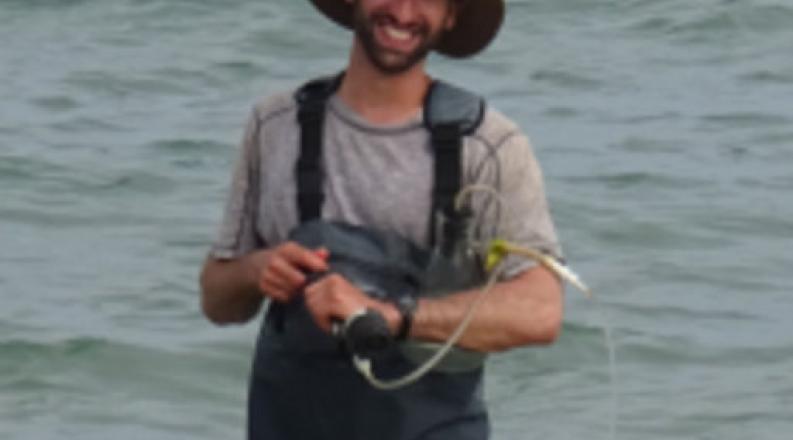By Tiffany Whitfield
A global study, led by researchers from 13 worldwide universities, including Old Dominion University, reveals that submarine groundwater discharge can rival the nutrient loads carried to coastal waters by rivers. The researchers, including Joseph Tamborski, assistant professor in ocean and earth sciences, published their findings in "Nature Reviews Earth & Environment."
More than half of the world's population lives along the coast, meaning that society has an environmental and economic stake monitoring and managing coastal water quality.
"While we often think about rivers carrying nutrients and contaminants to the coasts, we do not often think of groundwater, an 'invisible" pathway,'" Tamborski said. He, along with colleagues from around the globe, studied the inner workings of coastal groundwater.
"We can see rivers flowing into the ocean, but we often cannot see groundwater discharge, which occurs over a much broader area," Tamborski said. "As a result, submarine groundwater has remained understudied and often neglected by coastal water-quality managers."
The study reviewed documented cases of submarine groundwater discharge from over 200 locations in 31 countries. The study synthesized dissolved major nutrient fluxes from groundwater and found that groundwater discharge exceeded riverine inputs in 60% of the studies.
Sources of nutrients to fresh groundwater include septic waste and fertilizers. However, nutrients are also added to the coastal zone from saline groundwater that circulates through marine sediments, recycling decomposing organic material. When these nutrients enter the coastal ocean, they can help sustain local marine productivity. But too much nutrient loading results in the proliferation of algal biomass and negatively impacts coastal water quality.
The U.S. Supreme Court has ruled that the federal Clean Water Act applies to groundwater discharging to the ocean.
"We need to think of the coastal zone as a connected system. What happens on land, and in our coastal aquifers, will impact our coastal water bodies," Tamborski said.
At Old Dominion University, researchers will begin monitoring submarine groundwater discharge and nutrient cycling in the tributaries of the lower Chesapeake Bay.
Related News Stories
Pediatric Asthma – Another Negative Outcome of Recurrent Flooding, ODU Researchers Find
Study co-lead author Joshua G. Behr says the situation, which is especially acute in economically challenged neighborhoods, should “ring alarm bells.” (More)
ODU-Led Study Published in Nature Climate Change
The NASA-funded research, led by ODU’s Sönke Dangendorf, found that density changes in the open ocean have long been the dominant source of coastal sea-level variability. (More)
ODU’s Leslie Hoglund Is Tackling Food Insecurity in Communities
The clinical assistant professor in the School of Community and Environmental Health is focusing her latest research on Lackey, Virginia. (More)





